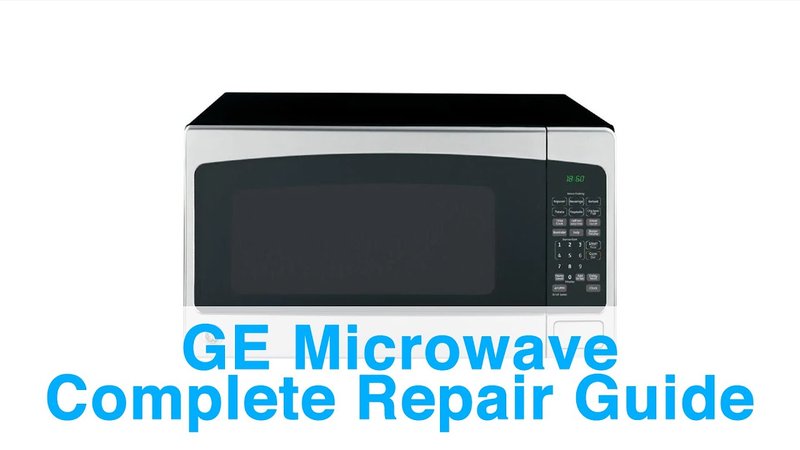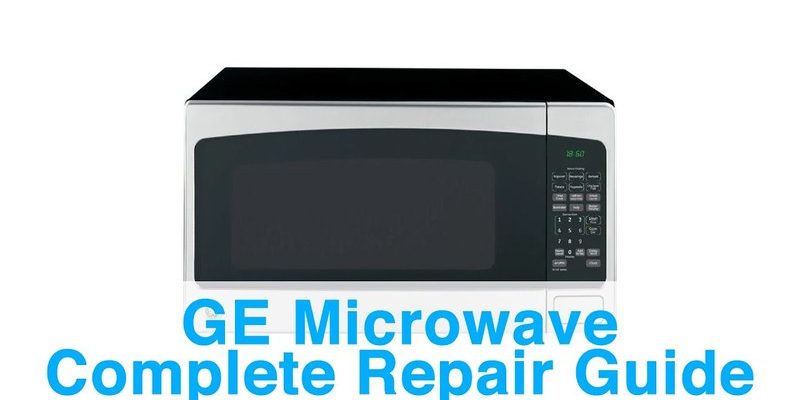
First things first, the “OE” error code is a signal from your microwave telling you that something isn’t quite right. Imagine it as a red flag your appliance is waving to get your attention. It’s like when your car’s check engine light comes on—ignoring it might not spell disaster immediately, but it could lead to bigger problems down the road. The “OE” code often indicates an obstruction in the microwave’s air ventilation system, a critical component that prevents overheating. Ignoring this might not seem like a big deal now, but hold on—your microwave could be trying to save itself from serious damage, and it’s best not to ignore the warning.
Understanding the GE Microwaves Error OE
So, what’s the deal with this “OE” error, really? When your microwave displays this code, it’s like a caution sign, warning of a blocked airflow. Think of your microwave as a small, confined space that’s constantly generating heat to cook your food. This heat needs to escape, just like steam from a kettle. If the ventilation is blocked, the heat can build up dangerously, much like a pressure cooker without its release valve.
You might be wondering, “Why does this even happen?” Well, common causes include food particles or grease buildup blocking the vents. Sometimes, even the way the microwave is installed can hinder airflow. For instance, if it’s squished between the wall and other appliances without enough breathing room, it can’t vent properly. Just like a person in a tight, crowded elevator, your microwave needs space to ‘breathe.’
Ignoring this error is like pretending your car engine doesn’t need oil. Maybe not a problem today, but eventually, engine failure could leave you stranded. Similarly, continuous overheating can lead to damaged components in your microwave, such as its magnetron—the part responsible for generating heat. Not to mention, there’s a risk of a fire hazard. Listening to your microwave’s warning is the first step to preventing bigger headaches later.
Common Causes of the OE Error Code
Now that we’ve established why the “OE” error matters, let’s dive into its common culprits. One of the main reasons for this error is a buildup of grime and food debris. Over time, particles can collect on the vents, creating a barricade against proper airflow. This is much like how dust clogs up an air filter, restricting the passage of air.
Another potential cause is poor ventilation due to improper placement. Picture trying to run while wearing a heavy backpack—it slows you down, right? Similarly, if your microwave isn’t installed with adequate space around it, the air can’t circulate, leading to overheating. Microwaves installed above stovetops are especially prone to this issue, as steam from cooking below can exacerbate the blockage.
Finally, sometimes the issue can be as simple as a defective or malfunctioning fan. Just as a broken fan in a computer can cause overheating, a faulty microwave fan fails to push hot air out, leading to the dreaded “OE” error code. If your fan isn’t turning on, it’s worth checking for any obstructions or signs of damage.
Now, you may be asking yourself, “What can I do about it?” Cleaning and maintaining your microwave regularly can significantly reduce the risk of encountering this error. Ensure it’s installed correctly with enough space around it, and promptly address any unusual noises, which could indicate fan troubles.
Consequences of Ignoring the Error
Let’s talk about what could happen if you turn a blind eye to this error. As mentioned earlier, neglecting the “OE” warning can lead to overheating, ultimately damaging your microwave’s internal components. Imagine a pot boiling over—at first, it’s just a mess, but eventually, it can damage the stove. Overheating can cause your microwave’s key components like the magnetron or capacitor to malfunction or fail completely. Repairing these parts often costs almost as much as a new microwave.
In addition to component damage, there’s a significant safety risk. Overheated parts or blocked airflow can increase the risk of a fire hazard. The microwave is designed to heat food, not itself. If left unchecked, overheating could cause your appliance to scorch, melt, or even catch fire, potentially endangering your home and family.
So, what should you do to avoid these potential hazards? It’s simple: act on that error code as soon as it appears. Regularly clean your microwave’s vents and ensure nothing is blocking them. Check your fan for operational efficiency and maintain adequate space around your appliance for ventilation. These preventative steps can save you from a hefty repair bill and ensure your microwave remains safe and functional.
Steps to Fix the OE Error
Feeling ready to tackle this issue head-on? Great! Let’s look at some practical steps to address the “OE” error. First, a good starting point is to give your microwave a thorough cleaning. Regular maintenance is crucial. Carefully remove any food debris and grease from the vents. Consider it akin to cleaning out a vacuum filter. You’d be surprised how much difference a deep clean can make!
Next, check the microwave’s placement. Ensure there’s enough space around it for proper airflow. If it’s installed over a stove or is too close to a wall, consider relocating it or adjusting its position. Just as you’d avoid placing a plant in a dark corner, your microwave needs room to ‘breathe’ to function properly.
Don’t forget to check the fan! A simple examination can reveal a lot. If it’s clogged or not spinning, clear away any obstructions. If the fan seems defective, this might require professional repair or replacement. Consider this like checking your car’s air filter; if it’s clogged, you’ll need to clean or replace it.
Finally, if these steps don’t resolve the issue, it might be time to consult with a professional. While DIY troubleshooting is a great first step, some problems are better left to an expert. Remember, the aim is to get your microwave back up and running safely and efficiently.
Preventative Measures and Best Practices
Now that you’re equipped with the knowledge to tackle the “OE” error, let’s talk about prevention. Keeping your microwave in tip-top shape is easier than you might think. Start by implementing a routine cleaning schedule. Like brushing your teeth to prevent cavities, regular maintenance keeps your microwave healthy.
Ensure your microwave is always positioned correctly, with ample space for ventilation. Consider it like giving your appliance a ‘breathing’ room. Avoid stacking objects on top or placing it where steam or grease could clog its vents.
Another tip is to routinely check the fan. Listen for any unusual noises, which might indicate a problem. If you notice something odd, don’t delay in investigating it further. It’s similar to how you’d act if your computer fan starts making a racket—better to check now than face overheating later.
Finally, while DIY methods are invaluable, don’t hesitate to reach out for professional help when needed. Regular inspections by a qualified technician can catch potential issues before they become serious. By following these preventative measures, you can keep your GE microwave running smoothly, free from pesky errors, and ready to handle all your cooking needs.
By understanding the significance of the “OE” error code and how to address it, you can ensure your microwave continues to serve you well, without unnecessary risks or costs. Remember, a little effort now can save a lot of trouble later on!
